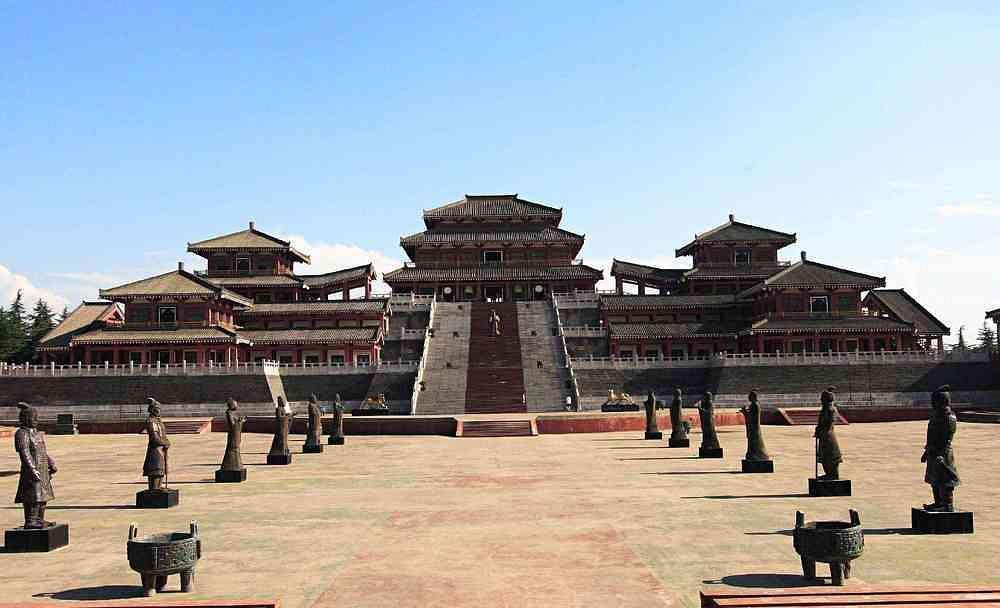
Where Was the Palace of Qin Shi Huang?
The Epang Palace was a Chinese palace complex built during the reign of Qin Shi Huang, the first emperor of China and the founder of the short-lived Qin dynasty. It is located in western Xi'an, Shaanxi Province. Archaeologists believe that only the front hall was completed before the capital was sacked in 206 BCE.
The Location and Layout of Epang Palace
The Epang Palace was situated about 15 kilometers west of Xi'an, the historical capital of China during the Qin Dynasty. The palace complex was colossal in scale, designed to showcase the emperor's absolute power and the grandeur of the newly unified China. Historical records describe the Epang Palace as a marvel of architecture and engineering, boasting magnificent halls, towering pavilions, and luxurious gardens spread across a vast area.
The Construction of Epang Palace
The construction of the Epang Palace commenced in 246 BCE, shortly after Qin Shi Huang ascended the throne. It was a massive undertaking, requiring the labor of hundreds of thousands of workers and artisans. The palace complex was designed to be the emperor's primary residence and the administrative center of the Qin Empire.
According to historical accounts, the Epang Palace was intended to be the largest and most impressive palace ever built. However, the construction was cut short in 206 BCE when the Qin Dynasty collapsed.
The Destruction of Epang Palace
After the death of Qin Shi Huang in 210 BCE, the Qin Empire plunged into chaos and rebellion. In 206 BCE, a rebel leader named Xiang Yu captured the Qin capital. It is said that Xiang Yu set fire to the Epang Palace as an act of revenge against the Qin Dynasty's tyranny. The fire is said to have raged for three months, consuming much of the palace complex.
Archaeological Excavations and Discoveries
Archaeological excavations at the site of the Epang Palace have unearthed remnants of the palace's foundation, walls, and other structures. These findings have provided valuable insights into the palace's layout, construction techniques, and the materials used. Despite the destruction it suffered, the Epang Palace remains an important archaeological site, offering glimpses into the architectural prowess and ambition of the Qin Dynasty.
Legends and Stories Surrounding Epang Palace
Over the centuries, the Epang Palace has become shrouded in legends and folklore. Some stories claim that the palace contained countless treasures and secret passages. Others speak of the emperor's lavish lifestyle and the palace's opulent interiors adorned with gold, silver, and precious jewels. While many of these tales are likely exaggerations, they reflect the enduring fascination surrounding the Epang Palace and the enigmatic reign of Qin Shi Huang.
FAQs
What happened to the Epang Palace?
The Epang Palace was largely destroyed by fire in 206 BCE by the rebel leader Xiang Yu following the fall of the Qin Dynasty.
Is the Epang Palace still standing?
Only remnants of the foundation and some walls remain at the archaeological site. The main structure of the palace was lost to fire.
Why was the Epang Palace built?
The Epang Palace was built by Qin Shi Huang to serve as his primary residence and the administrative center of the newly unified Chinese empire, showcasing the dynasty's power and grandeur.